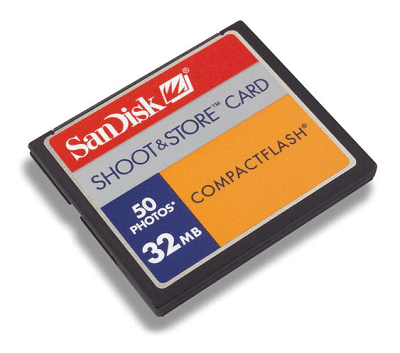Computer Components
Computer Memory
Computer Network
Computer Virus
Number Systems
Shortcut Keys
Terms
- What is a Browser
- Google Chrome
- Mozilla Firefox
- Internet Explorer
- Windows
- Computer Ports
- program
- Printers
- Microphone
- Monitor
- Motherboard
- Incognito Mode
- Mouse
- Memory Card
- CD
- ID
- ISO
- character
- server
- Keyboard
- Remote
- webcam
- Data
- URL
- keypad
- hub
- File
- Bytes
- Exabyte
- Gb
- Kilobyte
- Megabyte
- Petabyte
- Terabyte
- What is HDD
- What is SSD
- Memory vs Storage
- Non-volatile memory
- What is M.2 SSD
- How To Reboot A Computer
- Multi-Level Cell
- NAND Flash Memory
- What is the lock screen
- Block Storage
- Universal Serial Bus
- VRAM
- Cloud Hosting
- CompactFlash card
- What is WAP
- Classification of Memory
- Hardware vs Software
- Uses of Computer
- Uses of Internet
- Abacus
- Best Proxy Servers
- SSL VS. TLS
- Web Console
- GPU
- Difference Between LAN and WAN
- SSD and HDD
- Computer
- Data Migration
- JEDEC
- MLC vs. TLC vs. SLC NAND Flash
- VirtualBox Installation
- Num Lock
- PC
- MAC
- Continuous Data Protection
- Persistent Storage
- What is Bit
- Software Definition
- What is a File System
- When was the first computer invented
- How many generations of the computer
- Minicomputer
- Fourth Generation of Computer
- What is a Username
- What is ALU
Questions
CompactFlash card
A CompactFlash card is a memory card created by SanDisk in 1994 that stores data on a relatively small portable computer using flash memory technology. It has no moving mechanical elements and doesn't require a data retrieval battery. Small memory cards allow a wide range of computing devices for consumers to add data. CF cards today are mainly used by higher-end digital imaging and video cameras as interchangeable memory.
The initial CompactFlash card was developed by using NOR flash memory. NOR flash has the benefit of remotely executing storage programs without copying them into a computer's random-access memory framework. NAND, however, is more suitable for vast volumes of data storage and is the default form of flash memory found on all disposable memory cards, including the CompactFlash card and the Stable Digital (SD) card.

Since the flash is non-volatile memory, whether the power supply of a computer is switched off or destroyed, stored data is preserved. The solid-state architecture features of a CF card makes it more durable than most conventional storage units. For a CF card, the operating shock level (basically, the height from which they can be lowered and still work) is 2,000 gauss (G) opposed to a 100 G to 200 G level for a standard portable computing device's mechanical drive. This applies to a decline from 10 feet to the floor versus a single foot for the electronic disc drive.
For use with digital single-lens reflex cameras, CompactFlash is a common alternative card. Ultra-CompactFlash (Ultra CF), a high-end variant, is designed for more difficult shooting, such as a short shot sequence of high-resolution photographs or photos of a moving subject.
Technical specifications and vendors
CF cards measure 42.8 mm by 36.4 mm based on the Parallel Advanced Technology Attachment interface and are available with storage capacities ranging up to 512 gigabytes. CompactFlash cards allow service of 3.3V and 5V and are able to switch between the two. This differs from other flash memory small form factor, which can only run at 1V. There are two types of CF cards with different thicknesses to fit different capacities: Type I CF cards are 3.3 mm thick vs. 5.0 mm for Type II cards. A Type II CompactFlash card's extra thickness is that almost all of them were Microdrive's, originally created by IBM, a tiny rotating hard disc format.
SanDisk is now one of the world's biggest CF card manufacturers, but it has a lot of rivalries. Cards from Kingston Technologies, Lexar, and Transcend Knowledge are regularly receiving good ratings from digital imaging websites.
CompactFlash Association and Compliance
A CF card is self-tested for interoperability by the CompactFlash Group's member manufacturers, founded in 1995. The organization comprises 80 members and mostly works on the demands of both the technical photo and video industries and the manufacturing industry.
Cards which complete this testing are marked as follows:
CF 4.1a: Goods are commonly available at speeds up to a sequential access limit of 90 megabytes per second.
CF 5.0: Goods provide more effective commands that have a constant speed and facilitate TRIM operations.
g>CF 6.0: Implements Ultra Direct Mode Access 7, which provides up to 167 MB/s of bus speed and supports the Sani
In addition to setting CF and CFast cards standards, the CFA implements the standards for the latest removable flash memory card format, XQD. XQD cards connect with the much quicker PCI Express bus instead of connecting with a PATA bus on a CF card or a SATA bus with a CFast card.
Additional flash memory card formats
New flash memory card formats have been developed to store and upload files, images, and songs between constantly declining devices in physical size. For instance, a number of types and capabilities come from Safe Digital memory cards that are governed by the SD Association (an industry body close to the CompactFlash Association). The dimension of the SD cards is 32 mm by 24 mm by 2.1 mm. Due to their cut-corner appearance, they are easy to spot.
In many computer implementations, SD cards have replaced the bulkier CompactFlash card because of their smaller scale, lighter weight and lower cost. An SD card can be up to half the CF card's cost with an equal data storage capacity, depending on the vendor and variables such as read / write speed.


